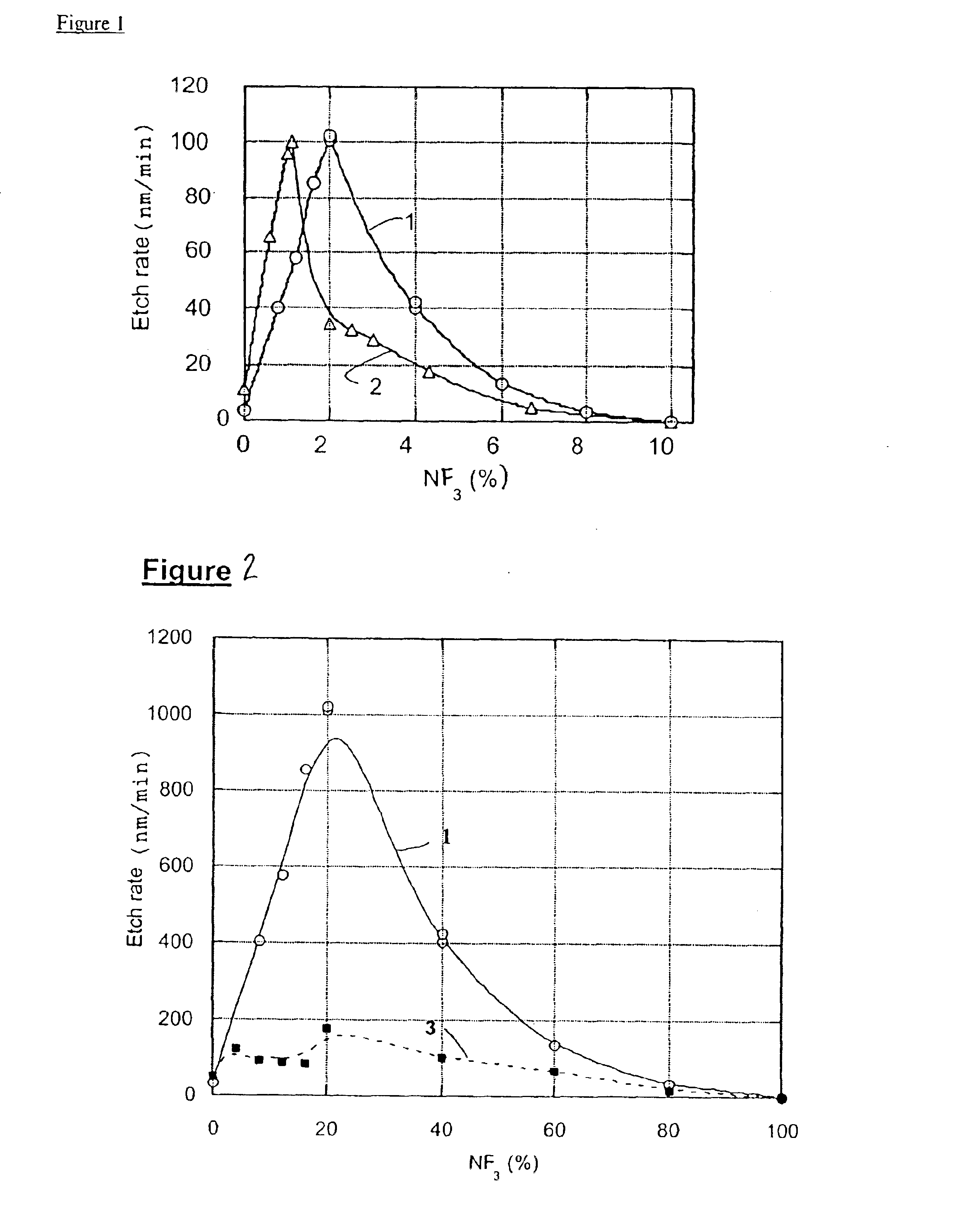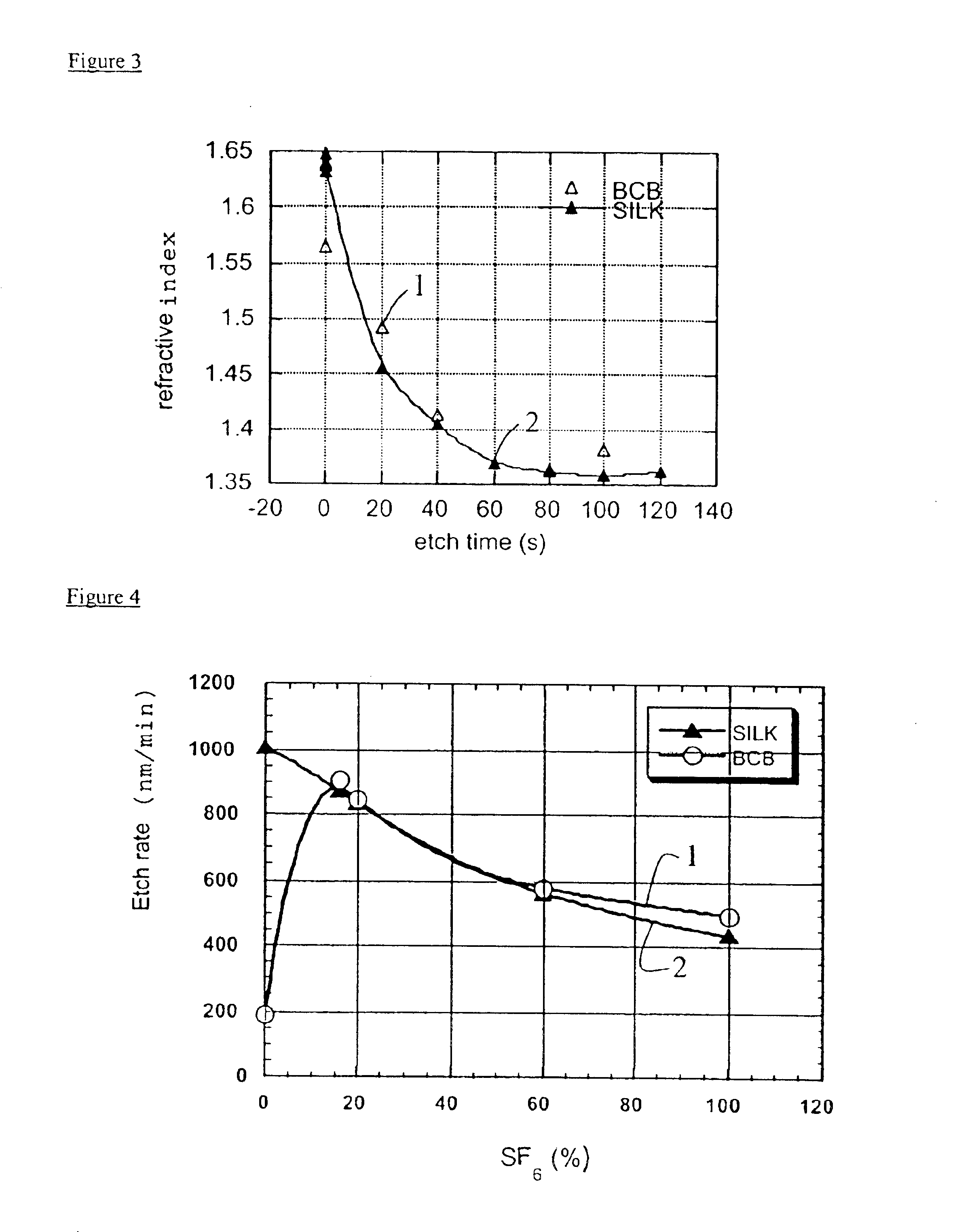Anisotropic etching of organic-containing insulating layers
an organic-containing insulating layer, anisotropic technology, applied in the direction of photomechanical equipment, instruments, photosensitive material processing, etc., can solve the problem of limited nitrogen-containing gas in the ambient environment, and achieve the effect of increasing the etch ra
- Summary
- Abstract
- Description
- Claims
- Application Information
AI Technical Summary
Benefits of technology
Problems solved by technology
Method used
Image
Examples
third embodiment
In the second aspect, a method is disclosed for sealing the exposed surfaces at least one opening formed in an organic-containing insulating layer formed on a substrate. Such organic-containing insulating layer can be a low-K dielectric.
FIG. 8a)-g) shows the sequence of creating an opening in a dielectric layer. This dielectric layer is part of a damascene dielectric stack formed on a semiconductor stack. This semiconductor substrate can be any substrate used in semiconductor industry such as silicon wafers. The substrate can further comprise active devices such as transistors or passive devices such as capacitors and resistors. The substrate can further comprise patterned layers of dielectrics and conductive materials (10) to form an interconnect structure. In FIG. 8e) the etch plasma (not shown) creates an opening in the dielectric stack (15,13,12). In prior art applications such as EP 1 037 275 the top surface of the low-k dielectric is being exposed to a plasma. The application ...
PUM
| Property | Measurement | Unit |
|---|---|---|
| Ratio | aaaaa | aaaaa |
| Anisotropy | aaaaa | aaaaa |
Abstract
Description
Claims
Application Information
 Login to View More
Login to View More - R&D
- Intellectual Property
- Life Sciences
- Materials
- Tech Scout
- Unparalleled Data Quality
- Higher Quality Content
- 60% Fewer Hallucinations
Browse by: Latest US Patents, China's latest patents, Technical Efficacy Thesaurus, Application Domain, Technology Topic, Popular Technical Reports.
© 2025 PatSnap. All rights reserved.Legal|Privacy policy|Modern Slavery Act Transparency Statement|Sitemap|About US| Contact US: help@patsnap.com



